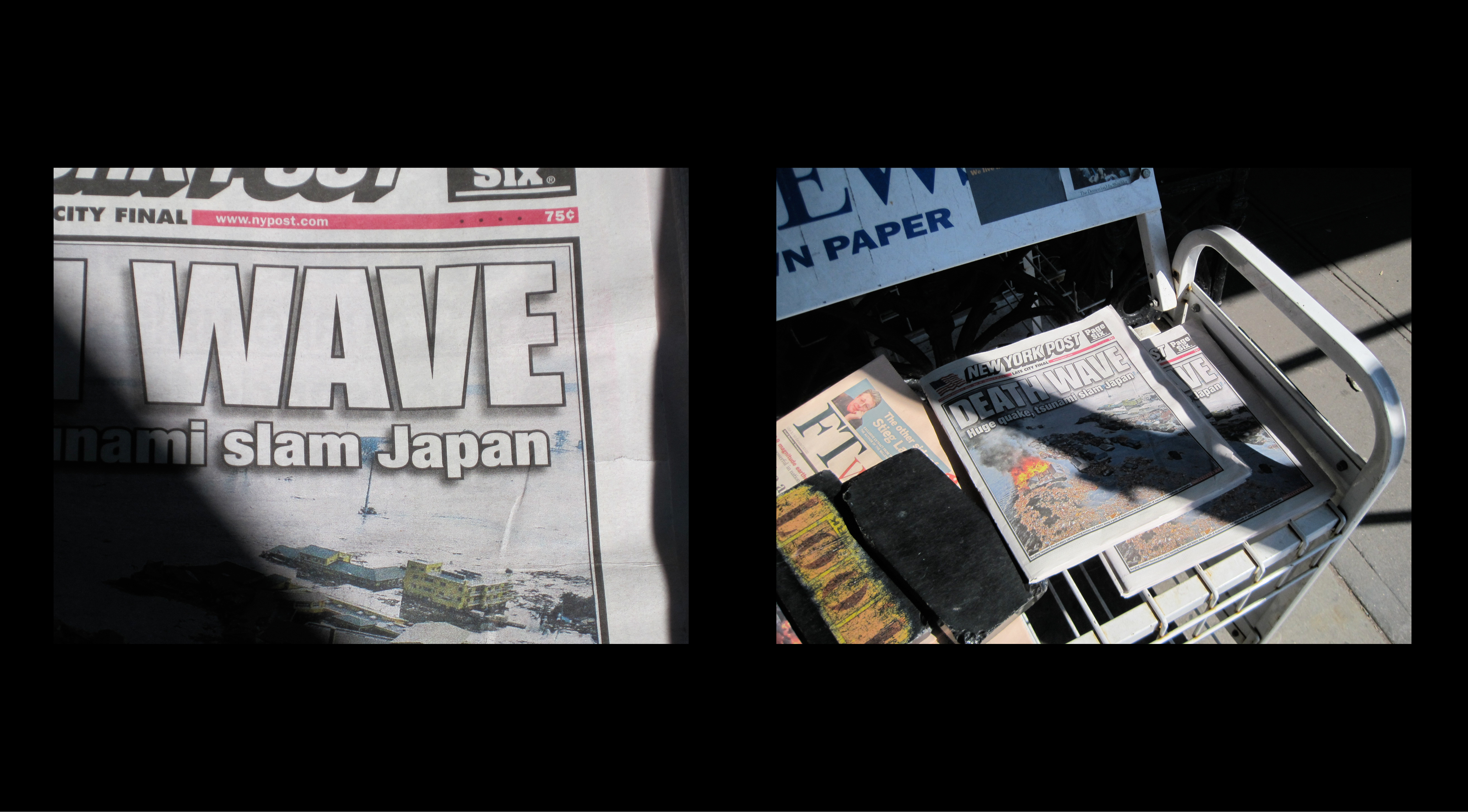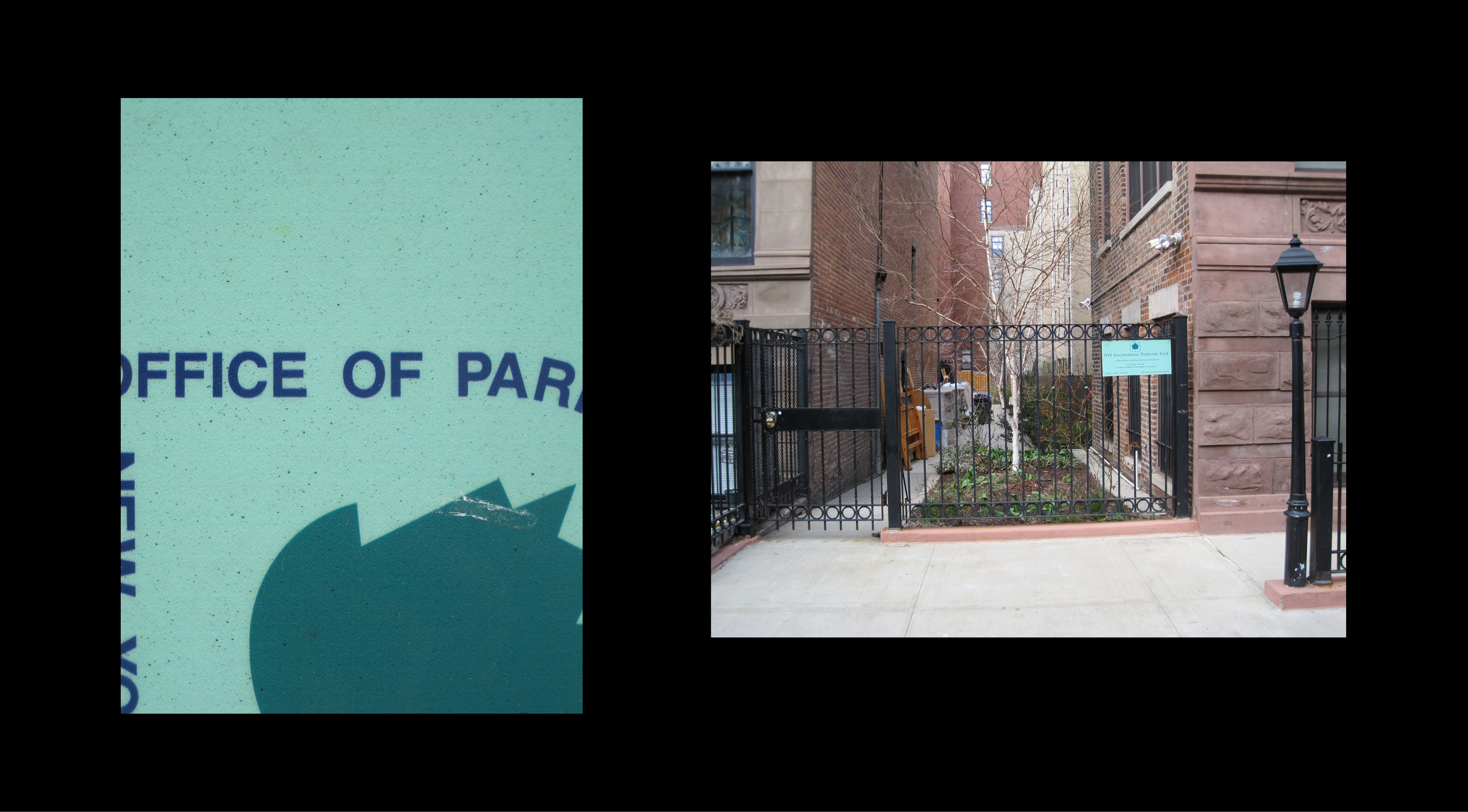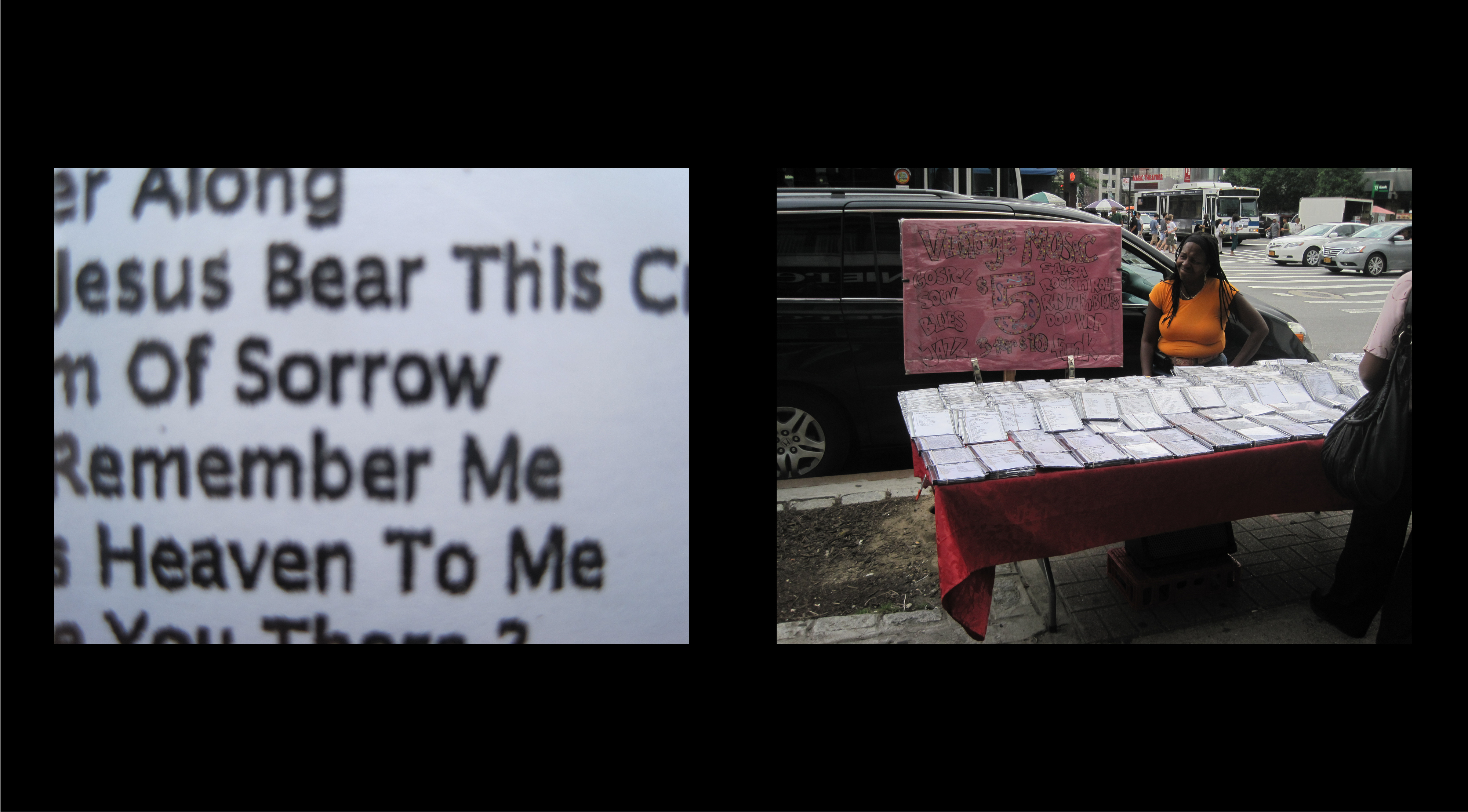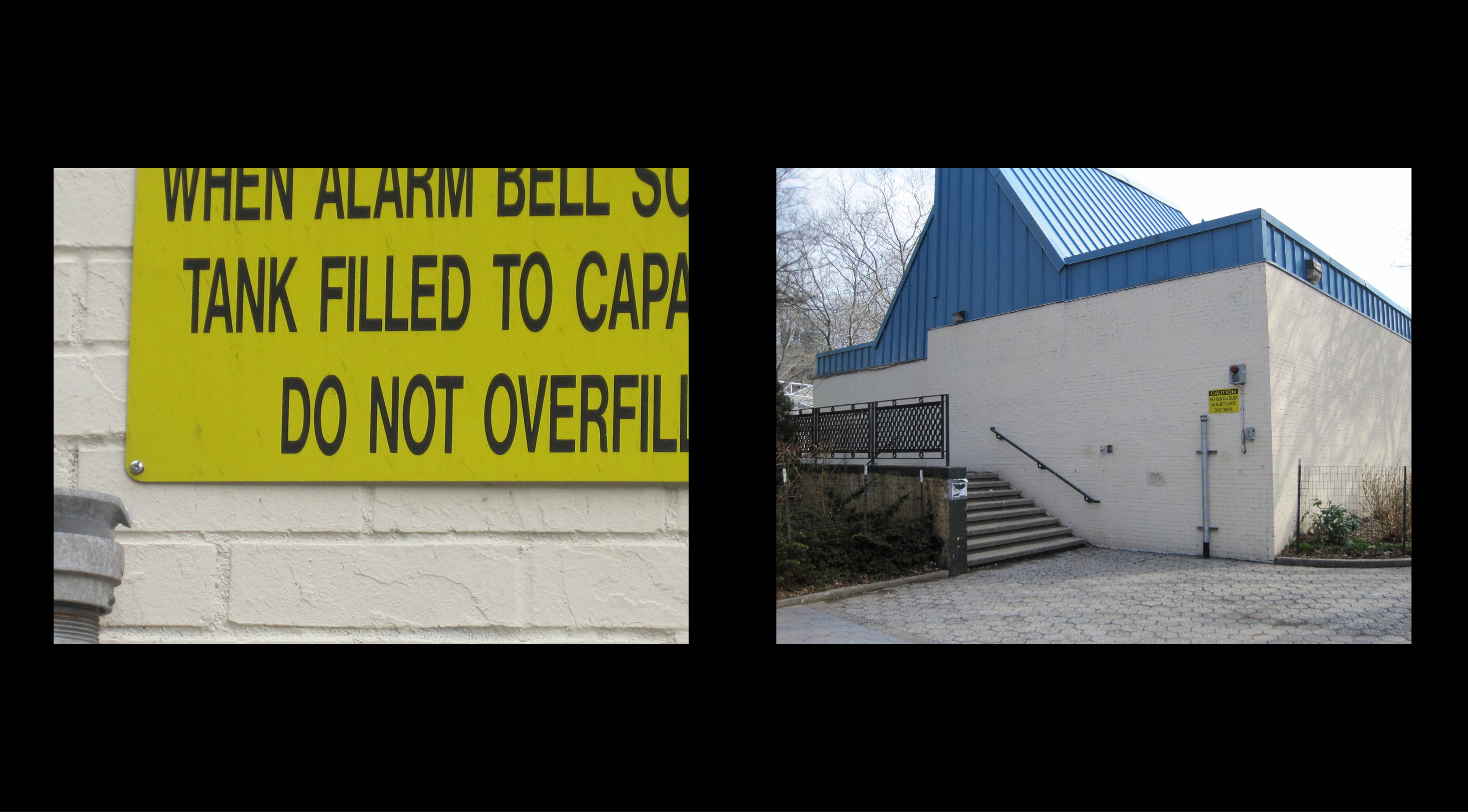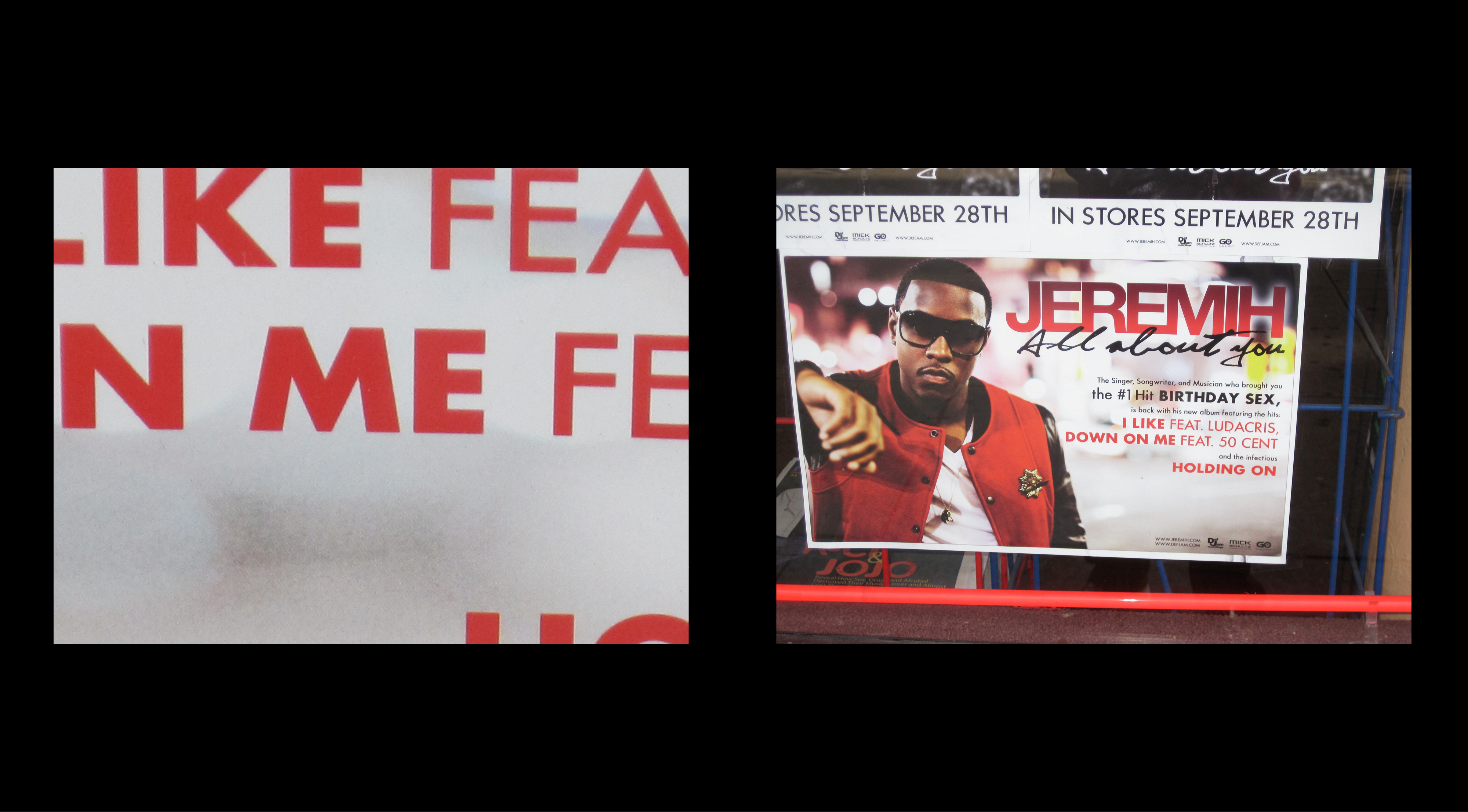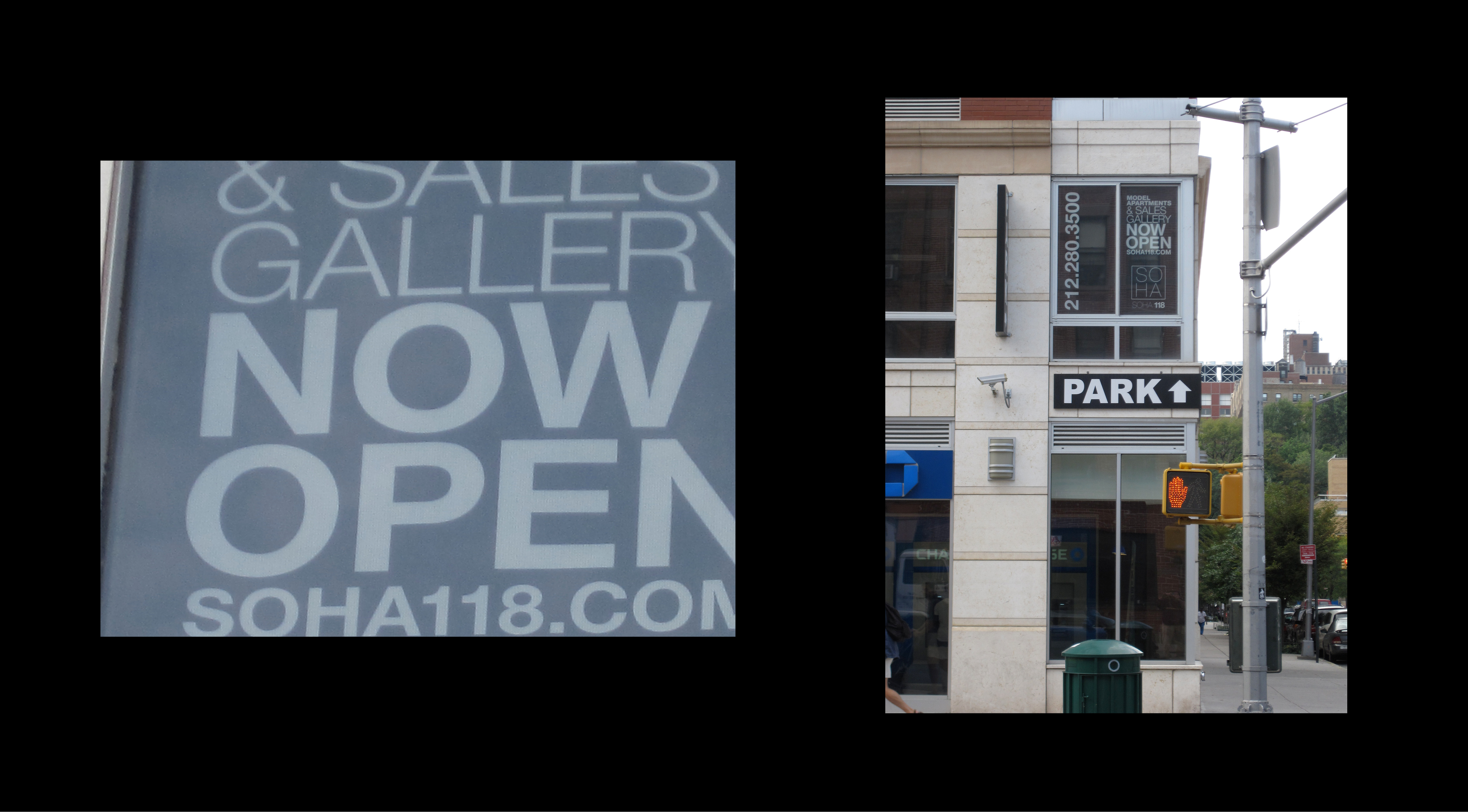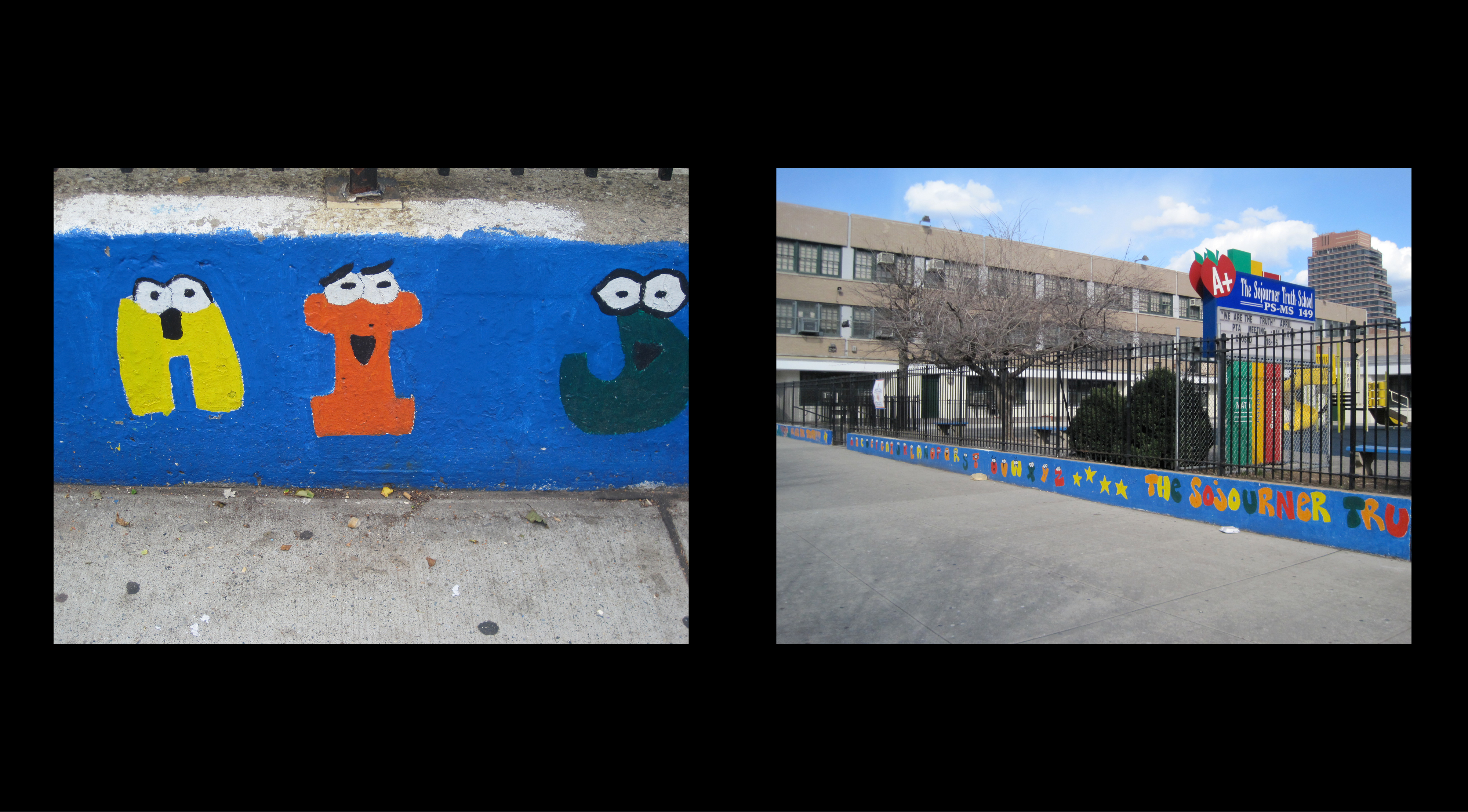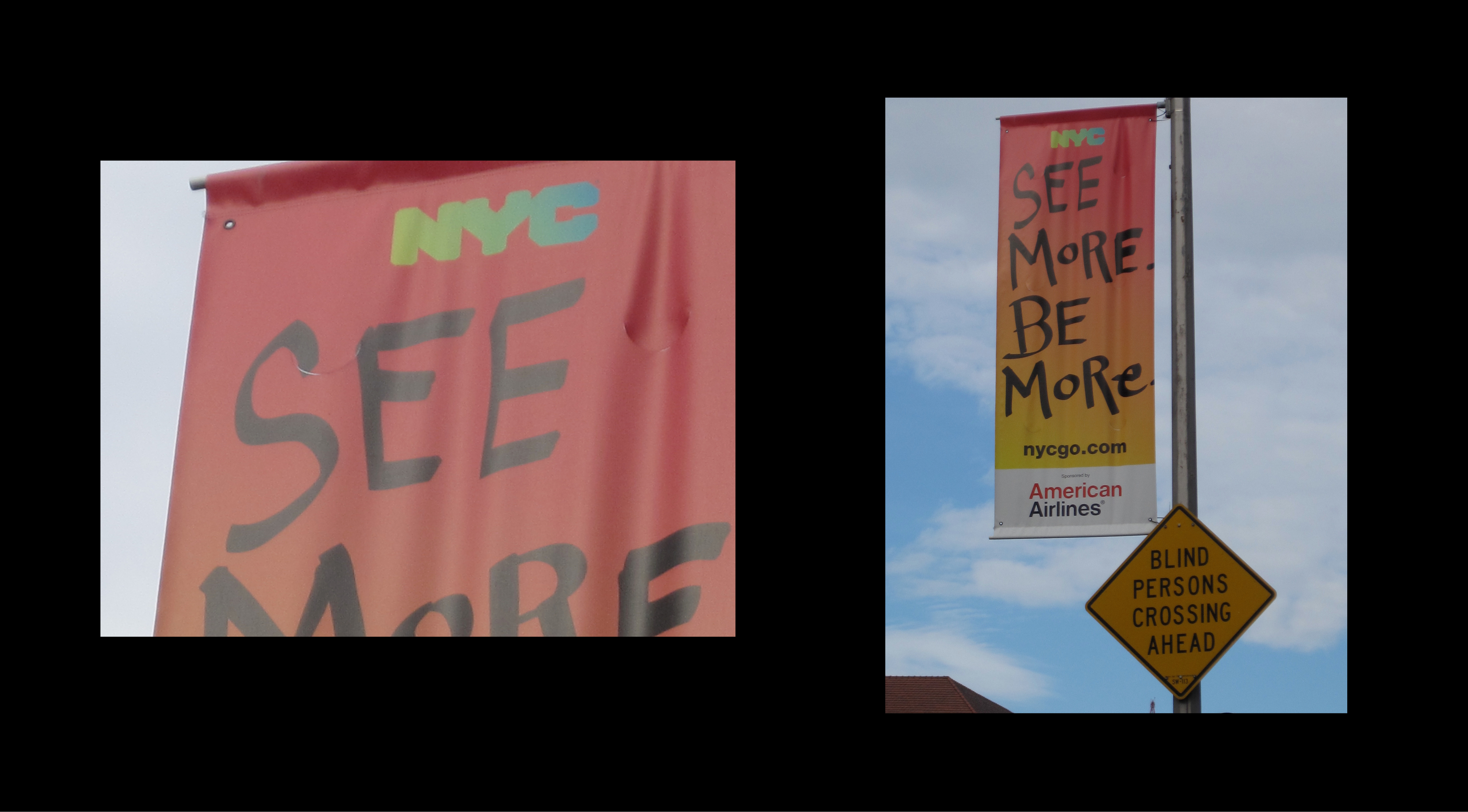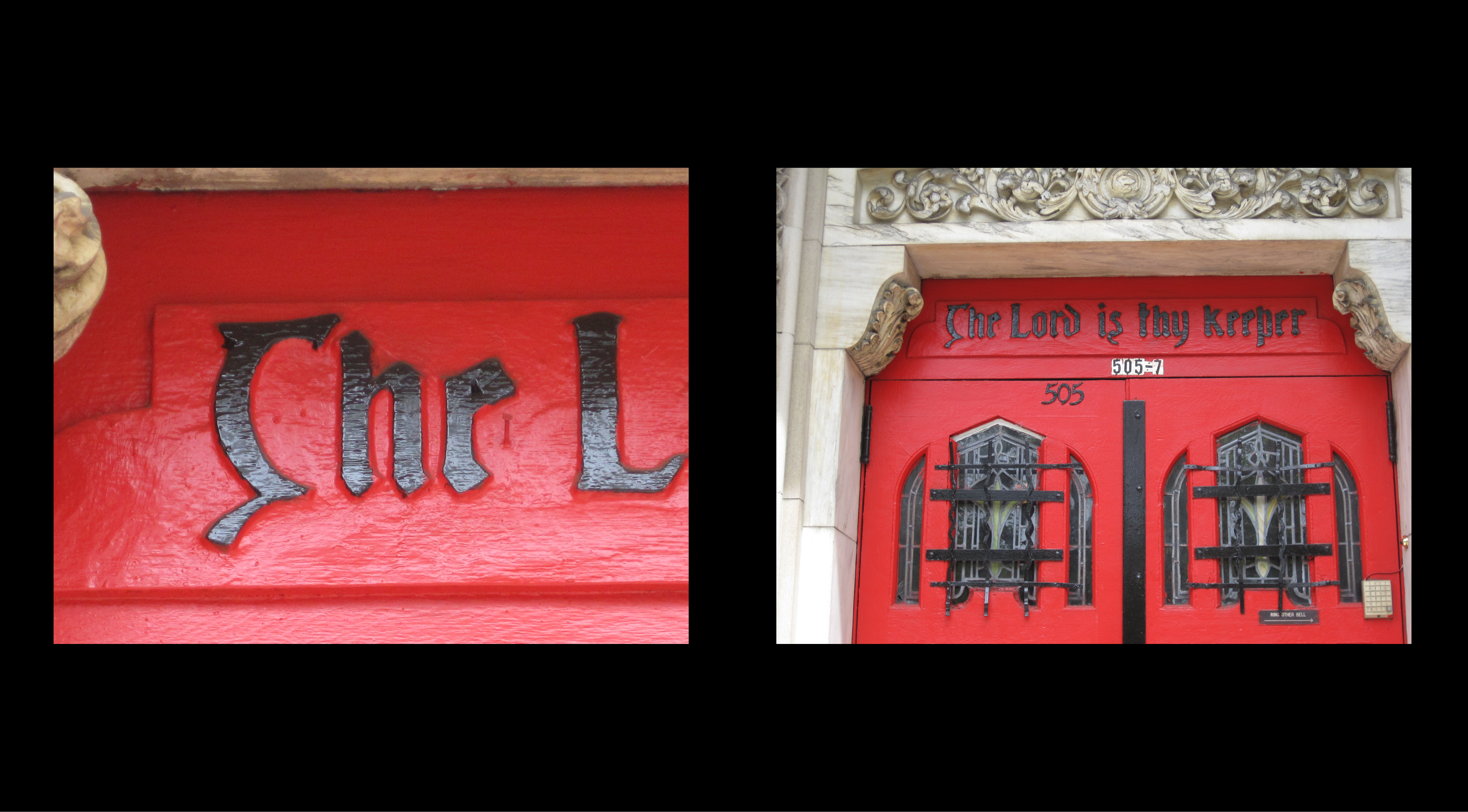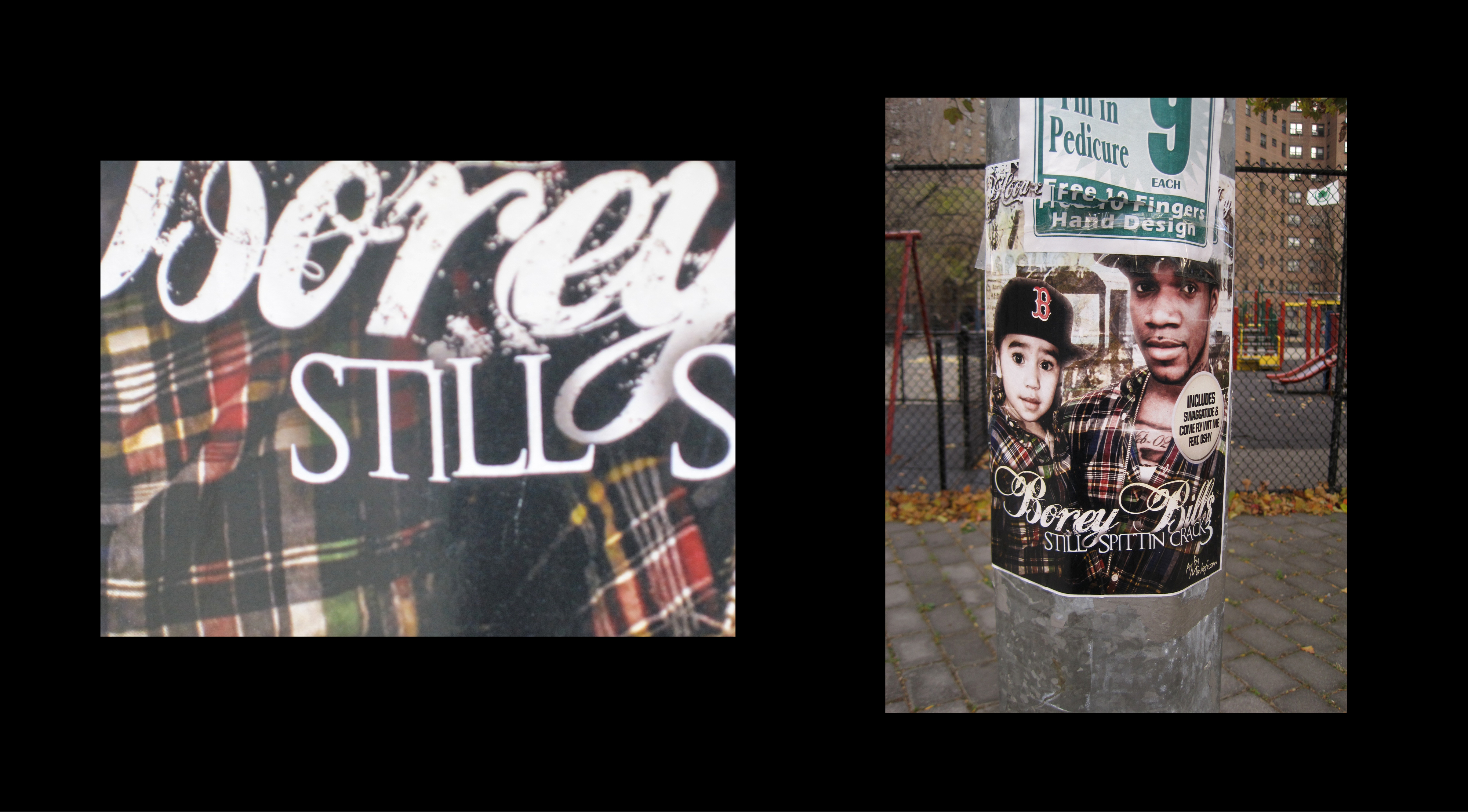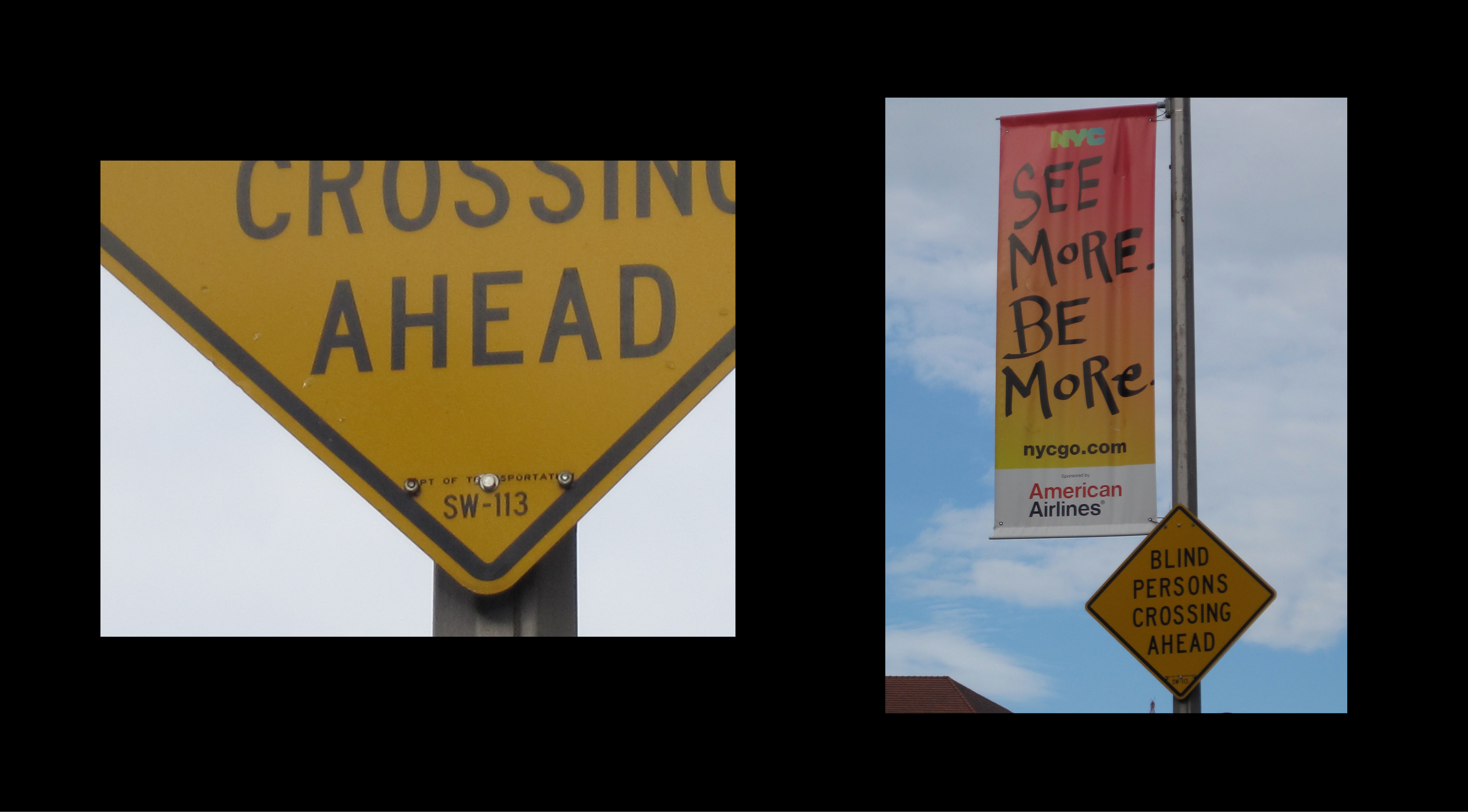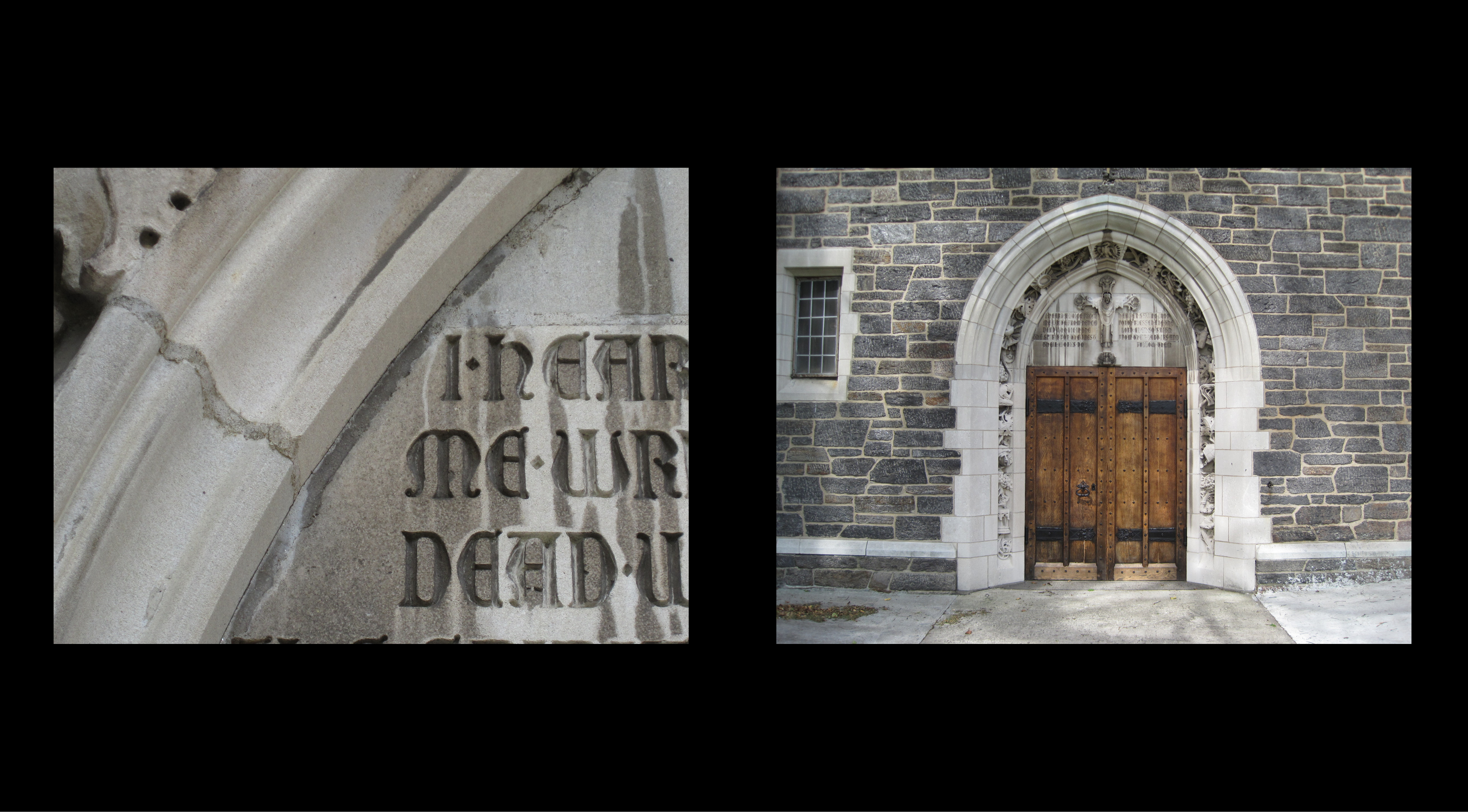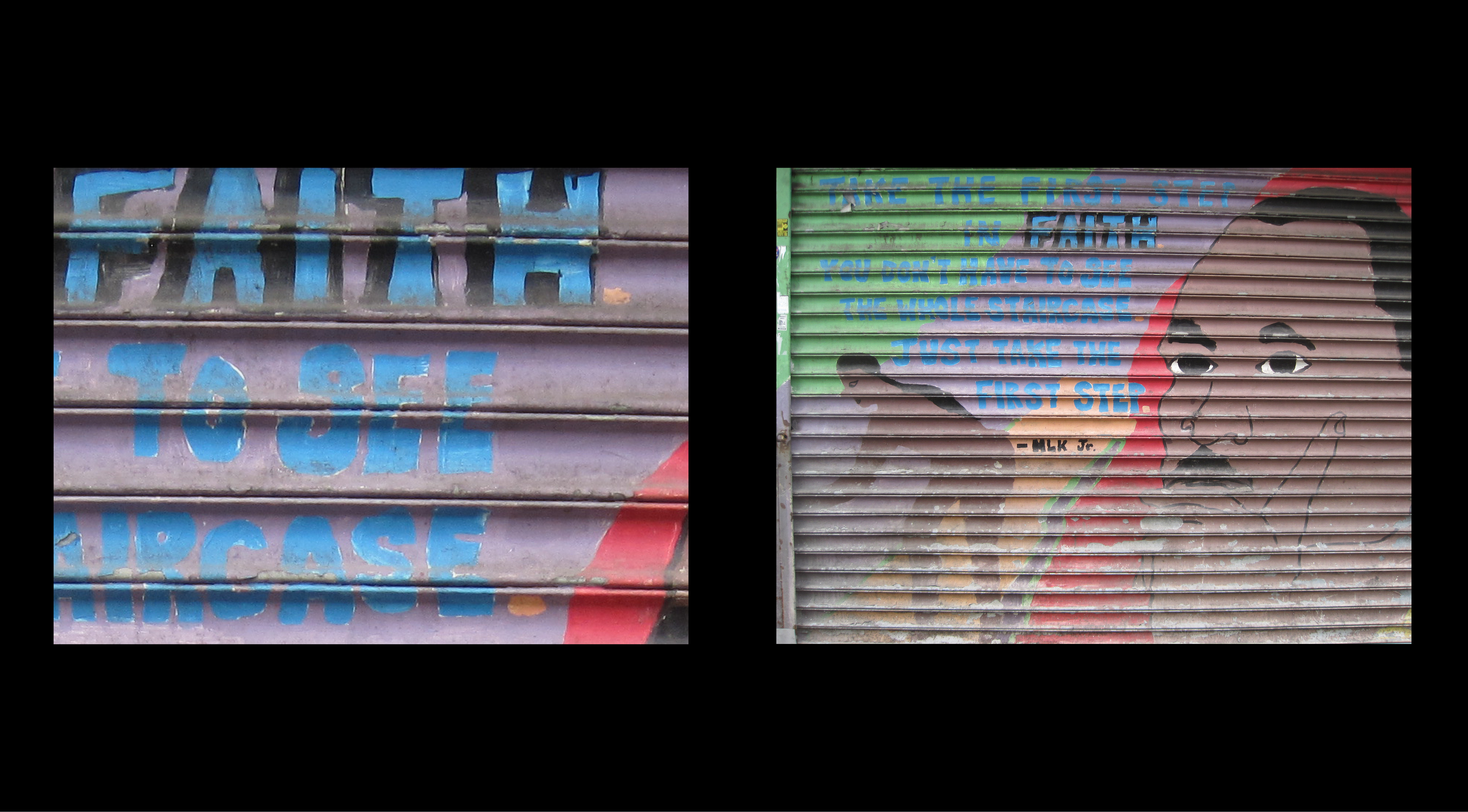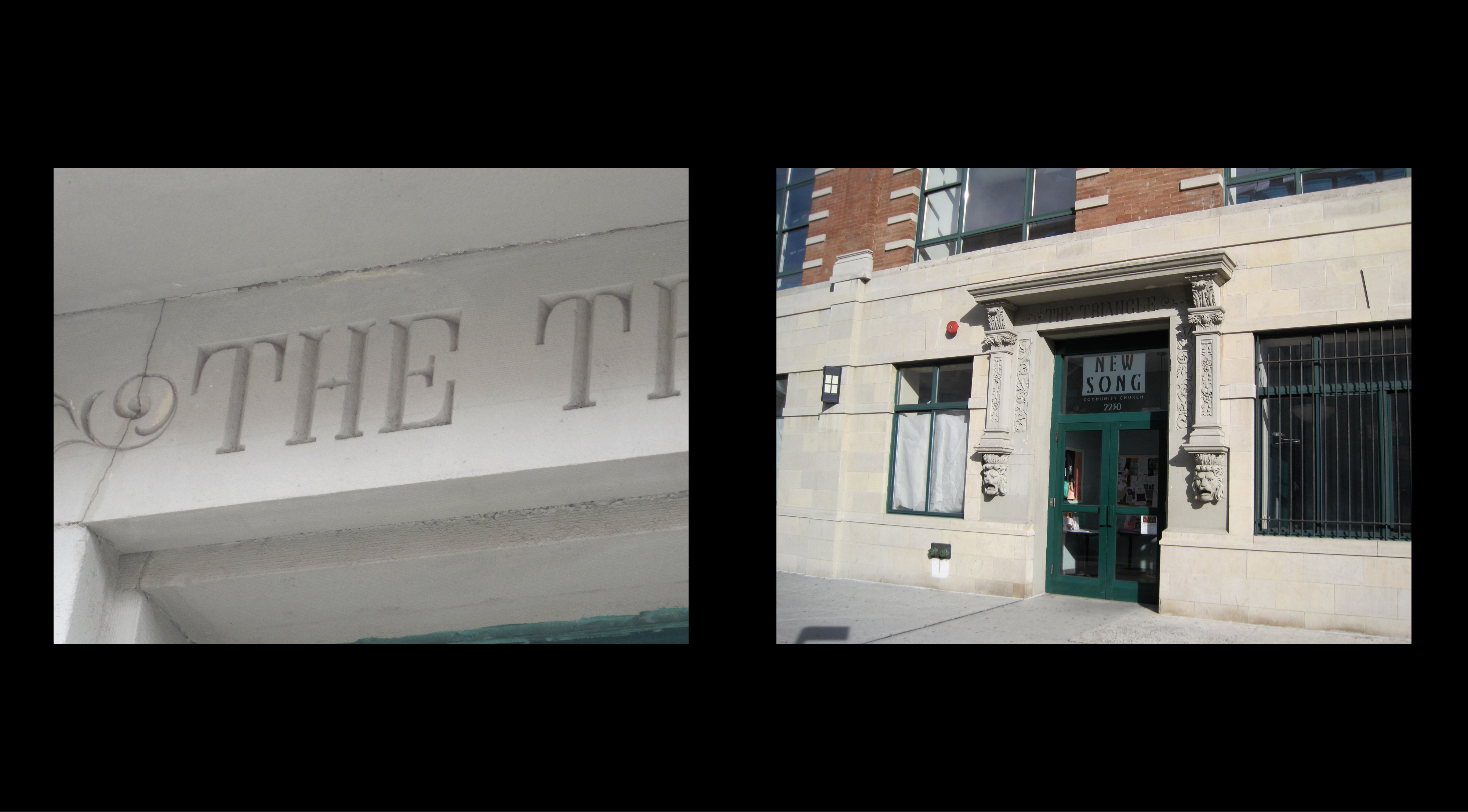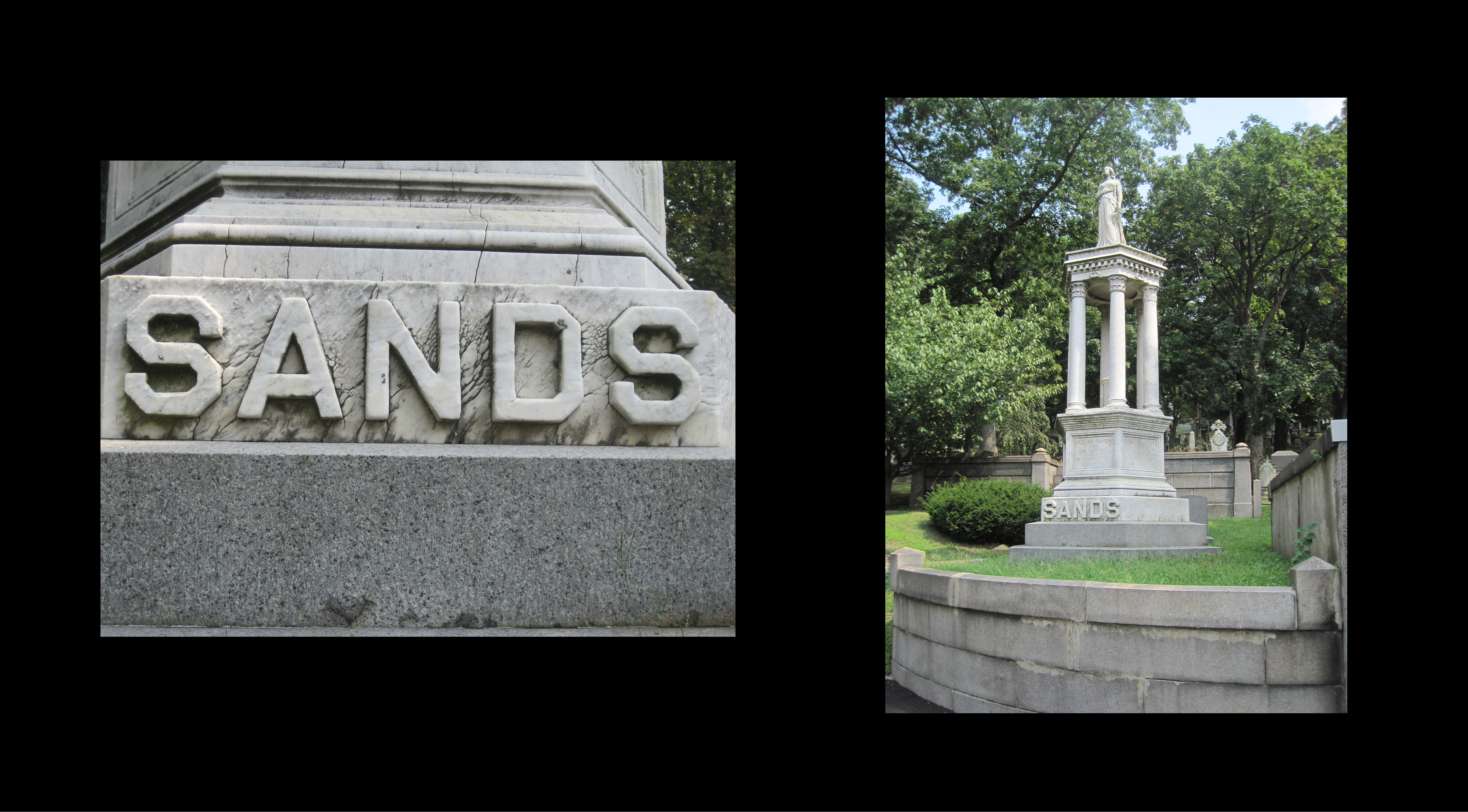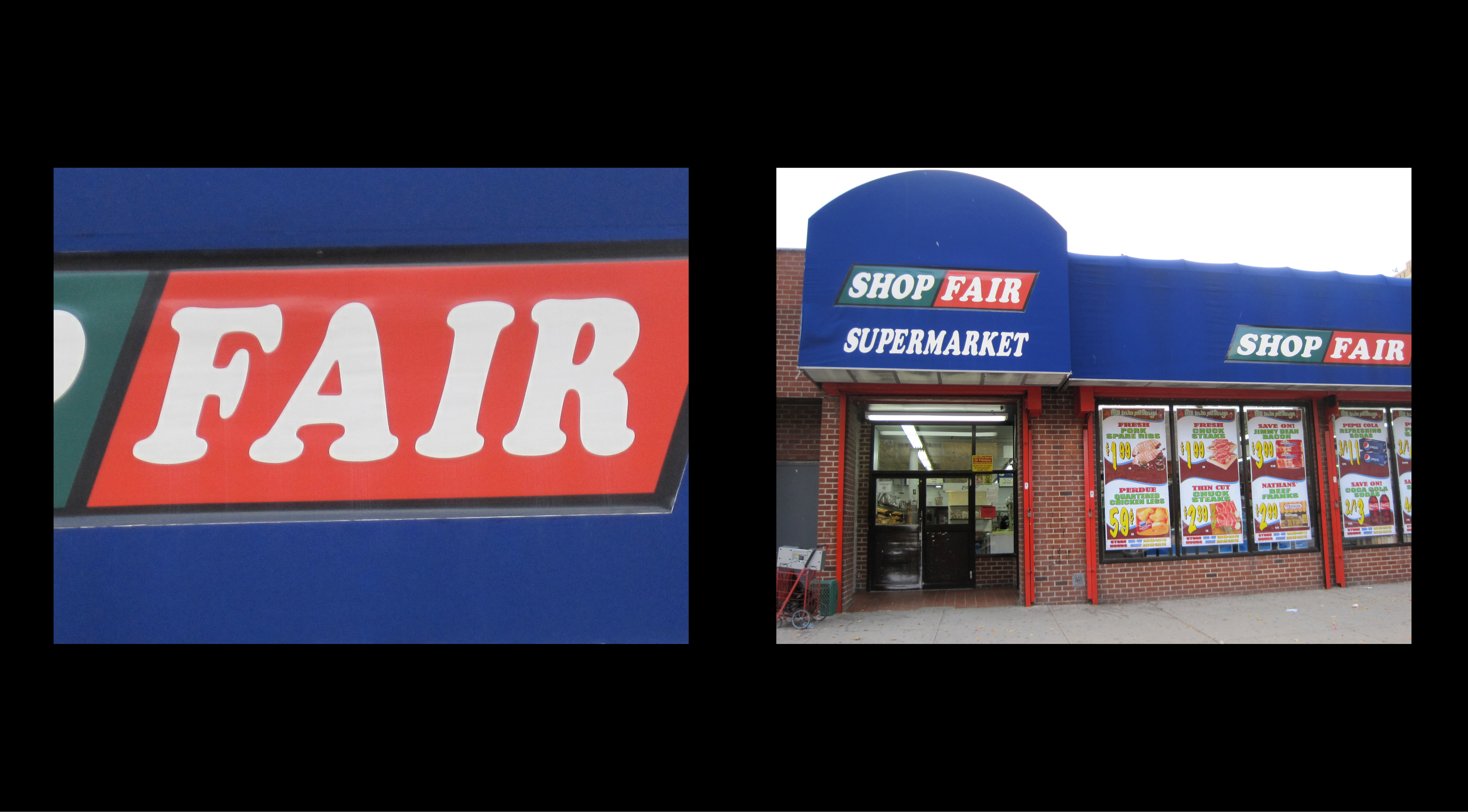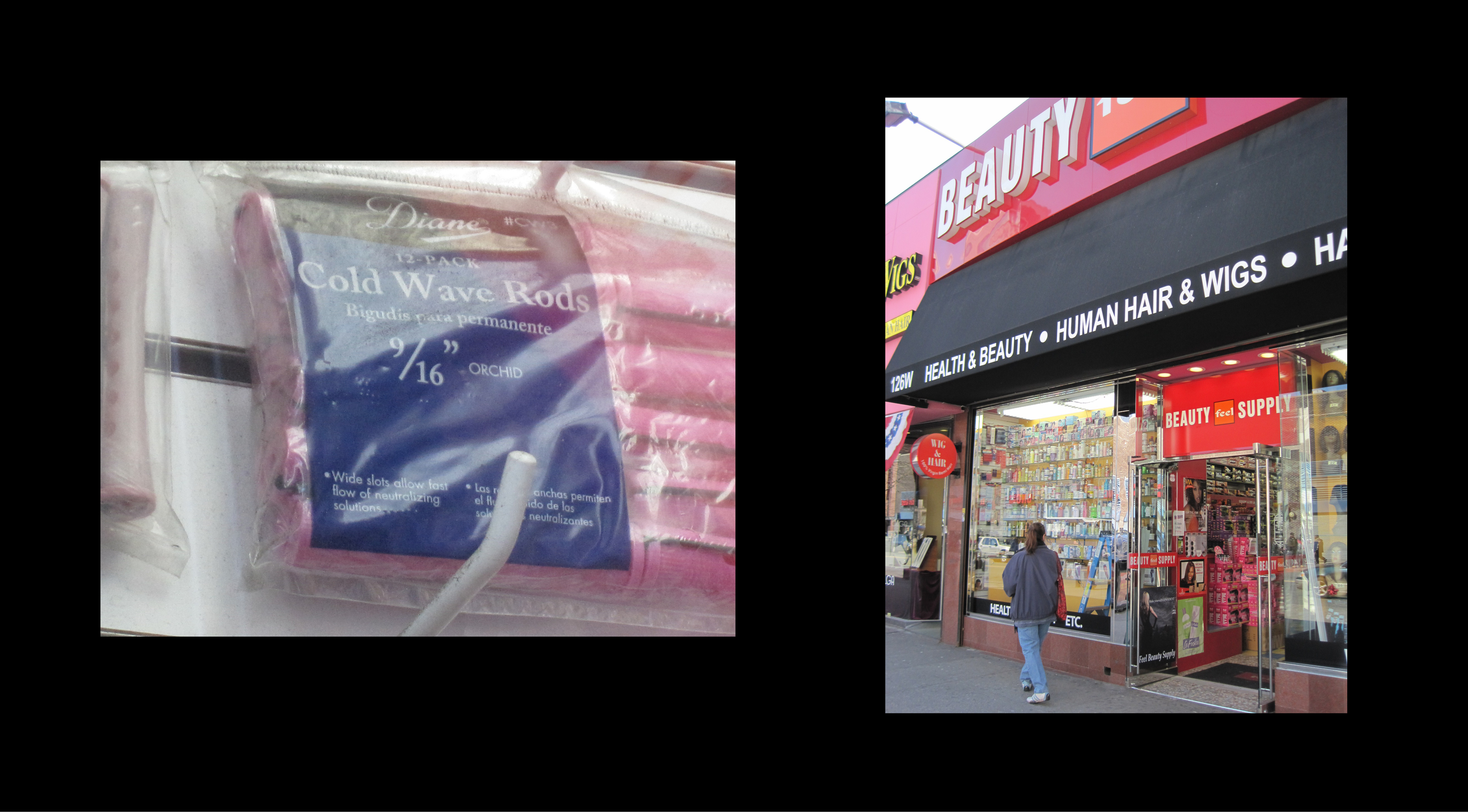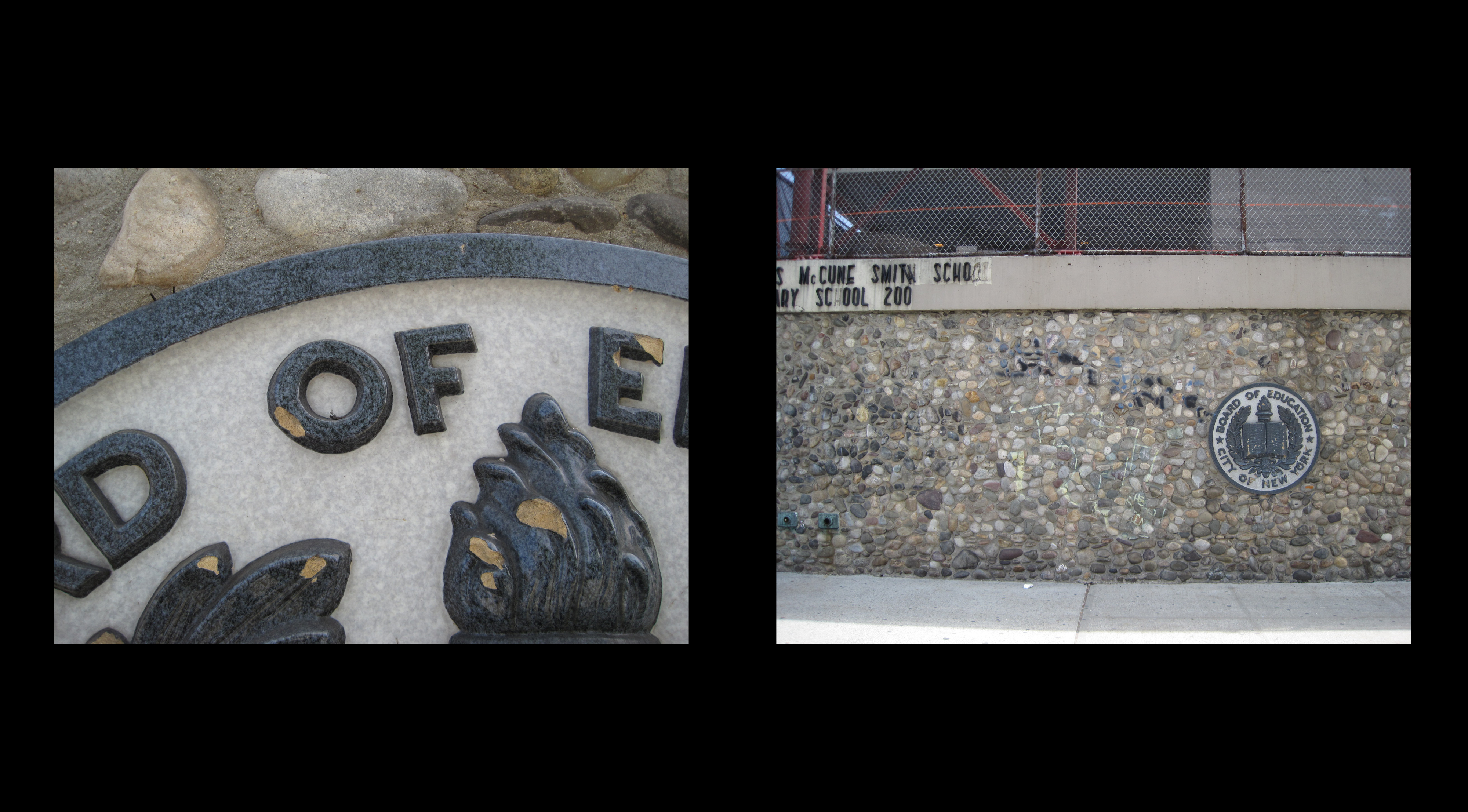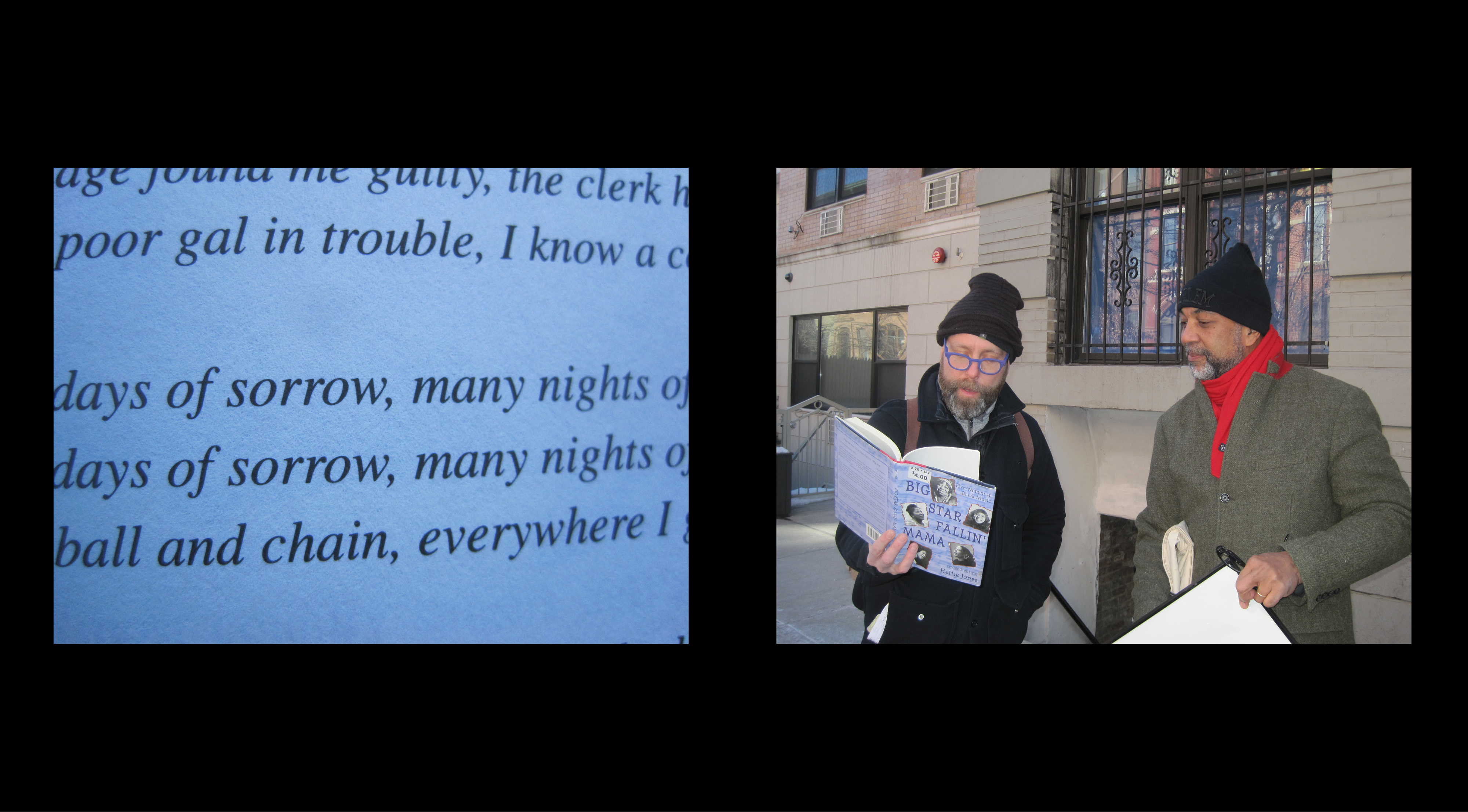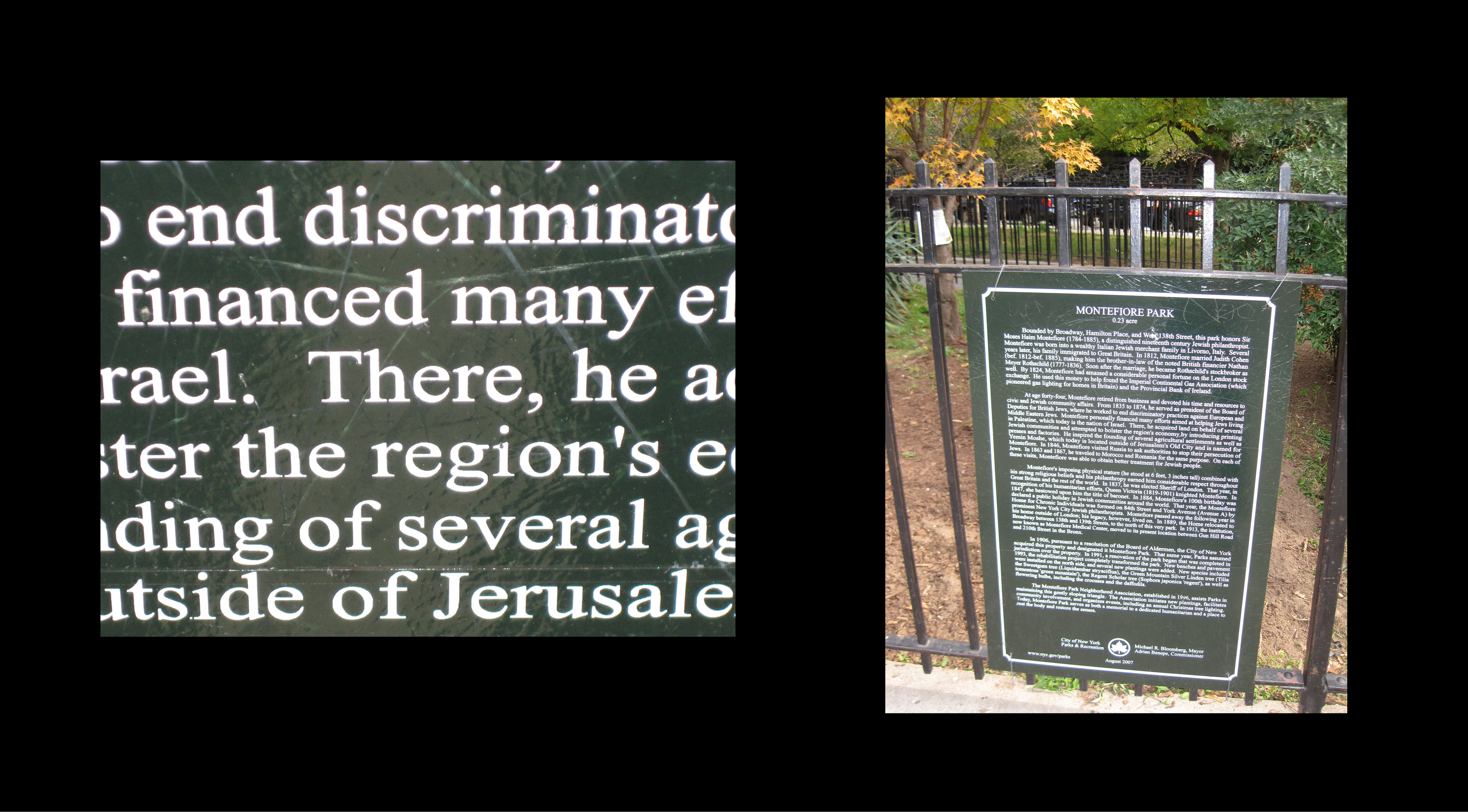News
Wayfaring
May 4, 2016 by Robert Sullivan
In which a small group—poet, historian, and reporter—search for the last two words missing after a five-year search for all of the words in the Langston Hughes poem “Island.”
ISLAND
Wave of sorrow,
Do not drown me now:
I see the island
Still ahead somehow.
I see the island
And its sands are fair:
Wave of sorrow,
Take me there.
—Langston Hughes
E. J. McAdams is a poet I know who has been looking for one particular Langston Hughes poem on and off for the past five years. He is looking, specifically, for the words that make up the poem, and he is looking, for all intents and purposes, one word at a time, outdoors—on buildings, on signs, on advertising—throughout the neighborhood where Langston Hughes lived until he died in 1967.
McAdams uses the term wayfaring to describe this kind of poetic work; it’s very simple and it leads to things that are sometimes something and sometimes not. It requires patience. Hughes lived in the Mount Morris Park section of Harlem, on East 127th Street, a stretch of which is now known as Langston Hughes Place. To give you an idea of how it works, and what the results are like, here are the places where he found the words that make up the first two stanzas: on the cover of a copy of the New York Post being sold on Lenox Avenue (wave); on an East 120th Street brownstone-restoration notice posted by the New York State Office of Parks, Recreation and Historic Preservation (of); on the cover of a homemade mix CD being sold on a table on East 125th Street (sorrow); on the fuel-tank filling directions at Marcus Garvey Park (do not); on another homemade CD case, this one of Ray Charles songs (drown); on a poster advertising a new CD by Jeremih, a Chicago-born singer, whose hits include “Down on Me” and “Birthday Sex” (me); a real-estate sign for new condominiums, in a building where the average price of an apartment is $2,146,666 which is a block away from a street with a yearly median income of $34,496 (now); in a mural of the alphabet painted at Sojourner Truth PS 49, on 117th Street and Lenox Avenue, which has since been painted over with African designs (I); on a banner hanging over St. Nicholas Avenue that was sponsored by NYC & Company—they are the ones who hired Taylor Swift to be the spokesperson for New York (see); on a lintel in the doorway of 155th Street, just east of Broadway (the); on the store sign at Island Salad, a health-food restaurant on East 125th Street, where they offer a Buffalo Soldier Wrap and a Bob Marley drink (Island); on a poster advertising a new CD by Borey Bills, Still Spittin Crack (still); on a Blind Persons Crossing Ahead sign on Lenox Avenue (ahead).
McAdams, who lives lives eleven blocks and one avenue away from Hughes’s old home, is not from Harlem; he grew up on the north side of Chicago, and went to Holy Cross College on a Naval ROTC scholarship, initially studying economics but winding up majoring in philosophy. (He dropped out of ROTC when he realized he was a pacifist.) Poetry happened to him in high school, when he found himself deeply affected by Wilfred Owen’s World War I poems. When he finished college he planned to become a philosopher but ended up as an assistant in a Harlem public-school classroom.
McAdams taught for three years and, in lieu of a PhD in philosophy, got a master’s degree in poetry, winding up, beginning in 1998, as an urban park ranger in Brooklyn. As a ranger, he helped establish the Salt Marsh Nature Center in Marine Park, and by the end of his career in parks, he was the parks department’s wildlife manager, helping to reintroduce, for instance, screech owls in Central Park. While executive director of NYC Audubon in the early 2000s, he was briefly a spokesman, in a sense, for Pale Male, the red-tailed hawk who lived on Fifth Avenue (Pale Male in turn being a spokesman, McAdams likes to say, “for the wild in New York City”). Today, he works at The Nature Conservancy and, as a poet, most recently has collaborated with iLAND, a non-profit dance research group that connects dancers with scientists to make performances that often relate to urban ecology. The idea of dancing outdoors inspired him. “I started to think, How can I take poetry outside?” he says, “and that’s when I started to figure out ways of walking.”
Walking led to a group of poems called “TRANSECTs,” in which he mixed walking and seeing with texts. A transect begun, for example, at East Twenty-Third Street and Second Avenue used the starting point—a maidenhair tree—as the root of an acrostic, and the sights (or in this case what you might call “words seen”) along the way (magazines, ATMs, etc.) to create the rest of the lines. He often walks with groups of people, and in May 2014, he led an urban ecology walk, what he called “a poetic walk in public space”—the space being a path from East Harlem to the South Bronx—using Audre Lorde’s poem “Making Love to Concrete” as its inspiration. Some lines: “You cannot make love to concrete/ if you care about being / non-essential wrong or worn thin…. ” Participants met on 125th Street in Harlem and walked across the Willis Bridge, which is referenced in the poem, to St. Mary’s Park in the Bronx, along the way reading the poem, conducting word-finding exercises, and collecting the results in a pamphlet entitled “Wayfaring.” The walk ended with McAdams gathering and composing language from the participants into “Wayfaring Collective Ode.” This collective poem was based on the poet Kaia Sand’s walks (and resulting poetry) in Portland, Oregon, where she tours forgotten history sites.
When we met last winter, McAdams was stuck. He had been unable to find the words sorrow and somehow after finding nearly all the other words in his first few word-search outings. He has not been inflexible in his search; he has tried to keep his plan loose. At first, he was only looking for words that were on buildings, words that seemed to have relatively permanent locations; he hoped to return with people, to tour the poem. “That’s still sort of the goal,” he says. He was telling me this on a Saturday morning at a café on 127th Street, just off Lenox Avenue. “But after the first session,” he went on, “the words were getting to be harder and harder and harder to find. So what happened was I started to cheat.” By cheat, he means that he began to take words off of posters and signs and ephemera, as well as to make less serendipitous excursions. He thought he could find sorrow in or around funeral homes in the neighborhood, but the trips proved him wrong. “I realized you don’t want to bring up the idea in that space,” he says. Even when cheating, it’s important to allow serendipity to have a hand. “Sometimes interesting stuff comes to you, sometimes it doesn’t—that’s the risk,” says E. J.
In not finding sorrow and somehow, E. J. did discover that the area is rich in security-related words, in words that warn, and poor in less secure words, like, say, fair.
“I was trying to get information from the neighborhood that I wasn’t imposing,” he said.
“You’re looking,” said John Reddick. “It’s like a loom—how do you pull those things in?” John had just walked in to the café; I had invited him on the spur of the moment, the night before, to come along on a word search. John is a historian trained as an architect and gives tours of the area. He grew up in Philadelphia but visited his relatives in Harlem as a kid, and moved there right after school, desperate to live in New York. A few years ago, for an exhibit of iconic Harlem photographs, John researched all the addresses of the photos for the Studio Museum of Harlem, a great Langston Hughes words in a poem-search credential, it seemed to me.
John brought along to our café a framed photo of Langston Hughes posed on his stoop that he keeps over his desk. I’d briefed John on the situation. He got it immediately and had even spent the night before thinking of word sites. “I thought maybe the food pantry run by the Church of Our Lady of Sorrows, but the church itself is on the Lower East Side,” John said. “And there’s no sign with sorrow there.
“I know, I tried that,” E. J. said.
“And by the way,” said John. “I just passed the Lenox Lounge, and that’s just a picture of sorrow right there. If we can’t find sorrow, we have that.” John ran down a list of people who had performed at or patronized the Lenox before it closed, from Billie Holiday to James Baldwin. Alex Haley interviewed Malcolm X there, to write The Autobiography of Malcolm X, and Langston Hughes was at Lenox Lounge when he narrated The Story of Jazz. John and E. J. lamented the demise of the club.
E. J. showed him all the words he’d found so far, the snapshots, and repeated his mantra: “Sometimes interesting stuff comes up, sometimes it doesn’t.”
“I get it,” John said.
As E. J. paged through his wayfaring notebook and snapshots, John could see that the last I in the poem was on another church lintel, on the south side of 155th Street, in a quote from Revelation 14, “I heard a voice from heaven...,” and that see was on a mural of Martin Luther King, Jr. painted on a storefront’s roll-down gate, King saying, “Take the first step in faith. You don’t have to see the whole staircase. Just take the first step.” The second and last the was on the lintel of the New Song Community Church, on Frederick Douglass Boulevard, and island was on the sign of a Jamaican restaurant on Lenox Avenue. And came from the window of Grandma’s Place, a children’s bookstore on 120th Street, and its was on the historic marker at the Church of the Intercession.
The Church of the Intercession is on the edge of Trinity Cemetery, on 155th Street, an amazing place at the outskirts of the poem search territory, where the Nevis-born Alexander Hamilton is buried, as well as a wide array of New Yorkers including the author Ralph Ellison and Mercedes de Acosta, the lesbian writer whose autobiography, Here Lies the Heart, was unsuccessful when published in 1960 but is now considered an important work of gay literature. (In her book All We Know: Three Lives, Lisa Cohen wrote: “Confronting a collection and a life like Mercedes de Acosta means being forced to consider, over and over, the boundary between the important and the inconsequential, between intellect and emotion, between something and nothing.”) Sands came from the nearby tomb of Richard Sands, a renowned acrobat who in the 1850s walked on ceilings with the aid of suction-adapted footwear. E.J found are on a Langston Hughes commemorative marker on 135th Street and fair on the awning of the Shop Fair supermarket, though that market closed recently, taking fair with it—as mentioned, the neighborhood is changing. The new market is called Fine Fare.
What if you wrote a poem backwards? Or what if you tried to see it un-poem, watch its words unravel back out into the world? And should we be seeding the world with words besides keep and out and private and property? Should building codes require poets to place words along walls, beautiful words, generative words, like etymological Johnny Appleseeds? McAdams’s search for “Island” is a kind of practice, of course, a way of increasing awareness and of seeing. And as I walked down the block wayfaring, I felt that heightened sense, seeing things in a kind of high-powered way, not as much like a real-estate broker or a developer or an apartment renter who always wants to rent cheaper, but a person searching somehow for sorrow, literally.
In his five years of searching, E. J. had never gone out looking with anyone but himself or his three children. “I have enlisted the kids to help me look whenever we go for a walk in the neighborhood but they have never taken it too seriously,” he says. “But if you asked them what words I am looking for they would say somehow and sorrow.” So he was hopeful, with more manpower, despite the repeated failure. E. J. was, I thought, fixated on the scarcity of somehow, wondering what kind of a word it is. “Has anyone done speculative etymology?” he asked.
There was a lot of talking, naturally, and, incredibly, we had only walked a block or so when we came upon some books being thrown out with the trash. E. J. pulled out a copy of A Midsummer Night’s Dream and was immediately on his smartphone looking for an online Shakespeare concordance—he had become a master of all word-search angles in his semi-desperation. When he found one, he read for a second and then said, “Nope!”
I was paging through a book that I felt sure had at least one sorrow in it, just had to. The book was Big Star Fallin’ Mamma: Five Black Women in Music, written by Hettie Jones, a poet. E. J. recognized her name and when I got home and looked her up I realized that she is also, among other things, the author of How I Became Hettie Jones, a memoir of the Beat scene of the fifties and sixties and of her marriage to LeRoi Jones (later Amiri Baraka). When I read it at home later, Big Star Fallin’ Mamma, first published in 1974, turned out to be an amazing book for young people; one that, as Nelson George reports in the introduction to the 1995 edition I had found, “helped shift the discussion of our nation’s music from male instrumentalists to female vocalists.” On the street, it was difficult to page through quickly, many pages devastating, many joyous. But on page twenty seven, I found sorrow, in the chapter on Ma Rainey, in a circa 1925 lyric which described the guerilla warfare waged against African-Americans in the south after the Civil War. “More that one hundred people were lynched every year in the first years of the twentieth century,” Jones wrote. “The law offered no protection as well as no advantage. And the chain gang was real.” Here is the lyric of Rainey’s “Chain Gang Blues”:
Many days of sorrow, many nights of woe
Many days of sorrow, many nights of woe,
And a ball and chain, everywhere I go.
“Look!” I said. (I think that’s what I said. I had put my notebook down to search.) There was a small celebration. We took some photos of the book and the location, and then we pressed on towards Hughes’s house. We walked slowly but could not find somehow. We passed a bodega, food packages stacked up against the window, the directions and box copy legible to passersby, and I got very interested, but then E. J. made a good point about the side of a package of noodles. “It won’t say somehow bring the water to a boil.” I kept walking.
We got to Langston Hughes’s house, an old red brick brownstone. No somehow, of course. E. J. likely would have noticed. Nothing on the street, nothing on the dashboard of nearby cars, or on street signs. We took a photo of John on the stoop with his photo of Langston Hughes on the stoop, for fun. Then we called things off.
At that point, we were all resigned to let somehow just sort of hang in the air. John and E. J. walked me to the subway on 125th Street. But unbeknownst to me, E. J. and John kept searching. They didn’t find somehow but they did discover an old bingo parlor that neither of them had ever visited. As I understand it, it was upstairs on the second floor of a building on 125th Street, in those big spaces that are still marked as dance halls and meeting places, even if the chain stores coming in don’t see the old signs or don’t care. John walked E. J. up, and it was filled with bingo players, mostly women, mostly black and Hispanic, who seemed not to notice them. E. J. called me the next day to tell me about it, and then he e-mailed me and John some photos, including one of the TV screen that showed the game caller’s results: a ball marked with the letter B and the number four.
It was John who noticed what E. J. had captured, an accidental find, like a small rare fish in a big catch. “E. J.,” he wrote, "I just realized that in one of your bingo shots you captured on the TV screen another probably difficult word to find in the public realm, before."
“What were the odds?” John added. “Really, how many singular words can be derived from the bingo card and you captured one?!”
E. J. wrote back. “I did take the photo but I did not notice its b-4/beforeness.”
"I think you captured another Harlem winner," John said.
E. J. signed off. “What a day,” he wrote.
E.J. McAdams is a poet and artist whose work has been exhibited in the Bronx Museum of the Arts and the Phoenix Art Museum. He lives with his wife and three children in Harlem.
Recent News
Writing Fellows
We're pleased to announce the 2024 A Public Space Writing Fellows.
July 1, 2024
